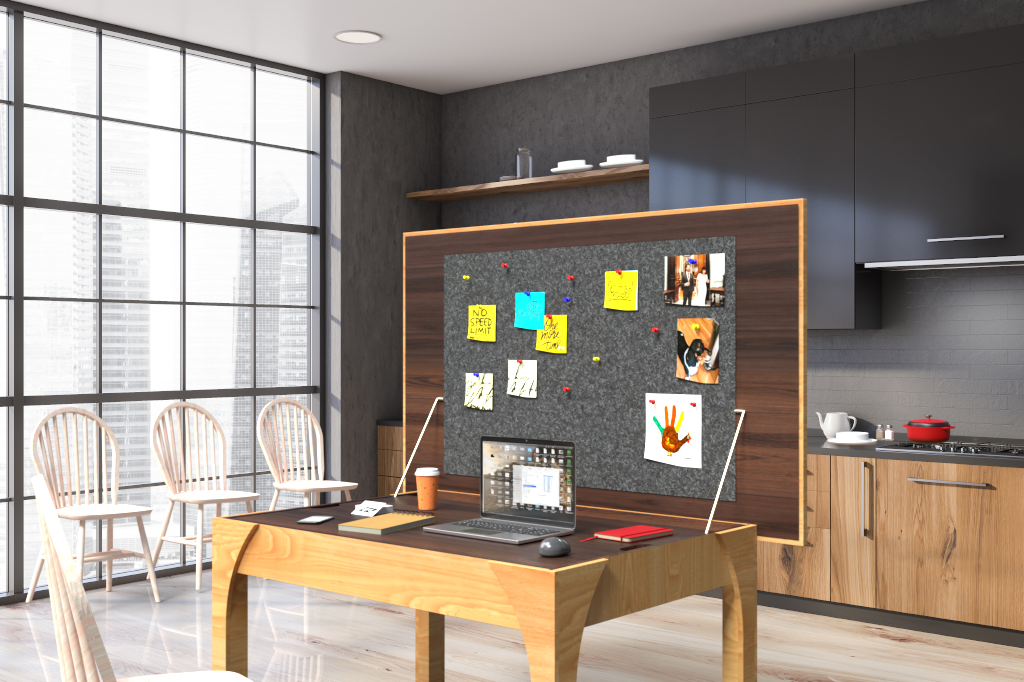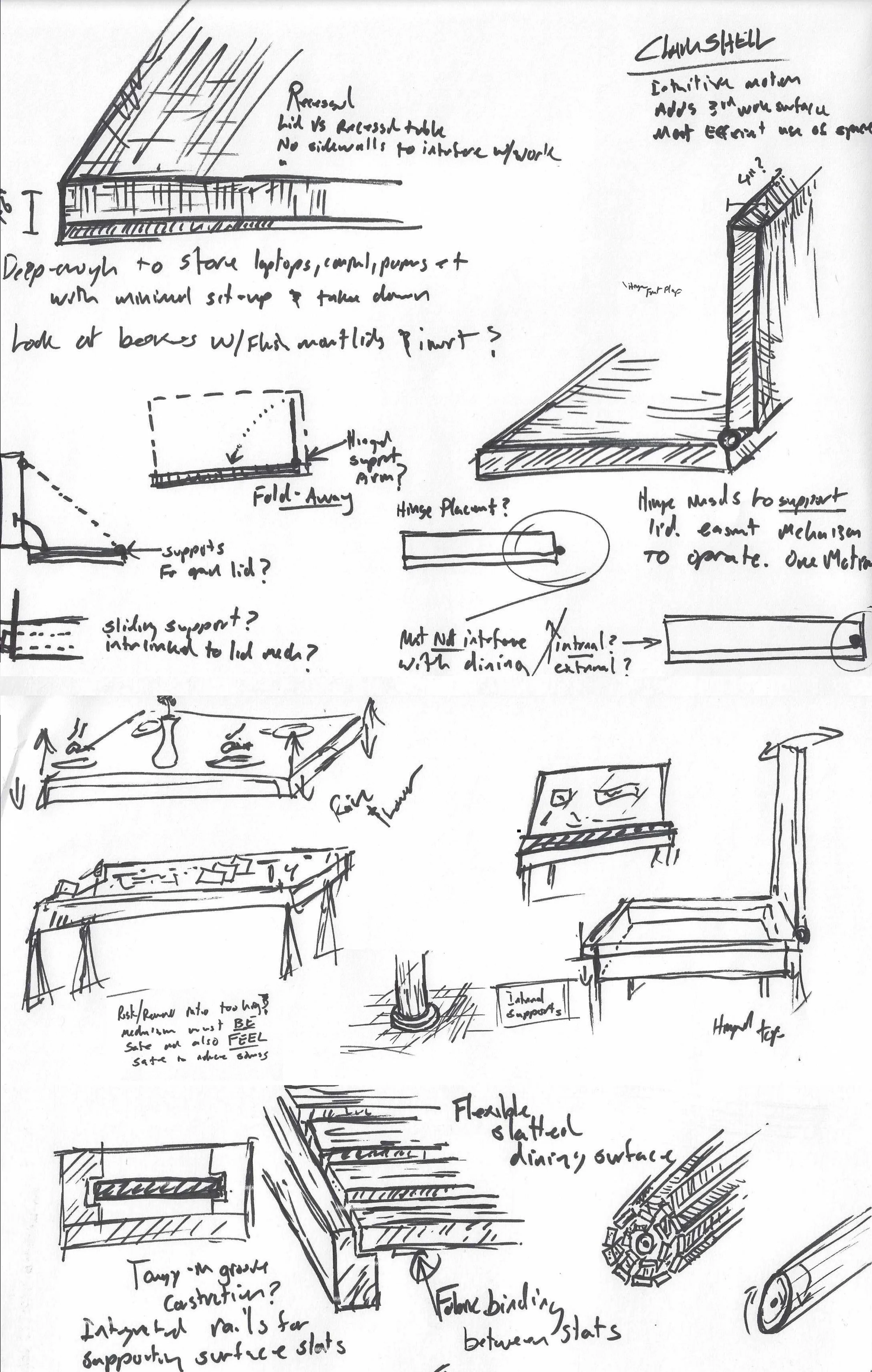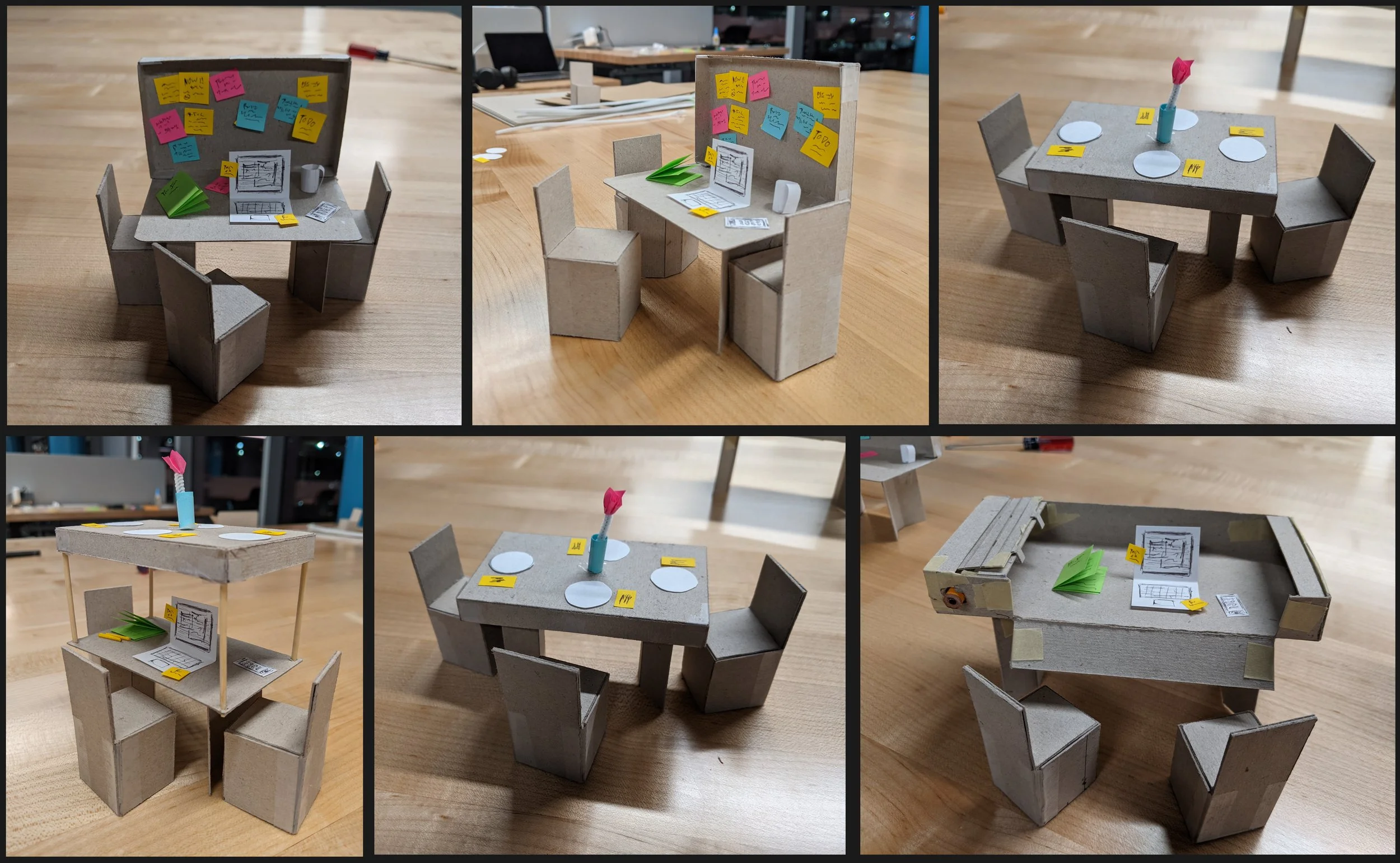
HIDEAWAY
It’s time to clock out, and dine in.
The kitchen is the heart of the home, and the dining table is the place where families and friends gather at the end of the day to share a meal, decompress, and re-connect. In the words of one young father:"Life just happens here." But, unfortunately, more than ever before, so does work. As the office continues to expand into the house, it's harder than ever to connect with our families even when they are right there in the room.
Remember what it was like to leave the office at the end of the day?
The Hideaway is a convertible dining table that swiftly and effortlessly transitions from work time to family time. There is no need to disrupt your carefully laid-out files and notes. It only takes a moment to slide the work surface downward and close the lid resulting in a pristine dining surface in two simple movements. With your laptop and paperwork securely stowed out of sight, you'll be free to relax and focus on what matters most. There wont be any more stacks of memos creeping into view from the corner of your eye and no little blinking light tempting you to open the laptop and answer one last email. The Hideaway will reduce stress and encourage bonding while simultaneously reinforcing the dwindling boundaries between work and home, leading to an increased quality of life for the whole family.
Research
The Hideaway project began with an exploration of comfort objects in the home. My design team conducted a series of interviews and with people across the country about their kitchens and dining spaces. These contributors took us on virtual tours of all sorts of spaces ranging from small Manhattan studio apartments to large suburban homes, and tidy Venice bungalows. We observed the daily routines that took place in these kitchens and took note of the continuing encroachment of office life into the home exacerbated by the Covid 19 pandemic. As these communal spaces were forced to serve double duty as workspaces people shared their increasing difficulty with maintaining healthy boundaries between their work time and their family time.
Key Takeaways:
In many homes the kitchen is the only communal space available for remote work.
Physically transitioning this multi-use space from “work mode” to “home mode” is often another source of stress.
The constant presence of laptops, files, and other work materials creates psychological pressure to be “always on” even outside of work hours.
Being surrounded by work materials often prevents people from being fully present with their loved ones.
Design Exploration
Having identified a design opportunity, I set about exploring the concept of a dining table that could instantly transition between a home office space and a family dining space by eliminating the need for the time-consuming cleanup and external storage required by the existing solutions.
A variety of 2d and 3d sketching techniques were used to develop a simple and effective mechanism capable of transitioning modes with minimal preparation and storing work materials in a secure and discrete manor.
Prototyping and Testing
I built a half-scale prototype using true-to-life materials and techniques. This fully functional model allowed me to conduct initial user testing revealing the need for an additional safety mechanism. The support arms prevented accidental closing of the lid but they did allow an absent minded user to close the lid without lowering the desk first which could damage or disturb the contents. This mechanism would be adjusted and repositioned to in such a way that the raised desk surface prevents the support arms from being disengaged providing and additional layer of security without adding any additional steps for the end user.
The next phase of the project was to build a full-scale prototype using foam and acrylic materials. This gave me the opportunity to test the piece with a variety of users in realistic scenarios. The lightweight, easy to work materials allowed me to be respond to user feedback, making adjustments to the mechanisms and construction and rapidly iterate on the base design without spending hours on fabrication for each element.
The Hideaway desk was selected as a finalist in the Philadelphia Center for Architecture’s “Best in Emerging Design” competition and put on display for the 2021 Design Philadelphia festival. This provided an excellent opportunity to build and refine a final prototype using more lifelike materials and incorporating the enhanced organizational elements built into the dining surface and receive additional feedback from members of the general public.















